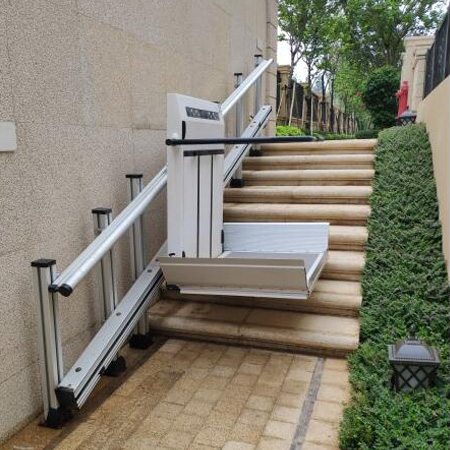
The basic mechanics of an inclined wheelchair lift involve a platform that moves along a track or rail system attached to the stairs or slope. The platform is typically large enough to accommodate a wheelchair and its occupant, and may include safety features such as guardrails, seat belts, and emergency stop buttons.
There are several different types of inclined wheelchair lifts, each of which operates slightly differently:
Cable-driven lifts: These lifts use a cable system to move the platform up and down the stairs. The platform is attached to the cable, which is driven by a motor located at the top or bottom of the stairs. The motor controls the speed and direction of the lift, ensuring a smooth and safe ride for the user.
Rack and pinion lifts: In this type of lift, a gear system known as a rack and pinion is used to move the platform along the track. The platform is attached to a pinion gear, which meshes with a rack gear attached to the track. As the pinion gear turns, it moves the platform up or down the stairs.
Screw-driven lifts: These lifts use a screw mechanism to raise and lower the platform. The platform is attached to a screw that rotates when the lift is activated, causing the platform to move along the track. Screw-driven lifts are known for their stability and reliability.
Hydraulic lifts: Hydraulic lifts use a hydraulic system to raise and lower the platform. A pump is used to pressurize hydraulic fluid, which is then used to move a piston that controls the movement of the platform. Hydraulic lifts are known for their smooth and quiet operation.
Inclined wheelchair lifts are typically operated using a control panel located on the lift itself or via a remote control. Users can easily operate the lift independently, allowing them to safely navigate stairs or slopes without assistance.
